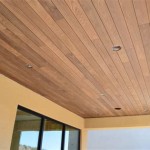Adding Big Patio Pavers To Your Home
Patio pavers, particularly those of larger dimensions, have become increasingly popular in residential landscape design. Their ability to transform outdoor spaces into aesthetically pleasing and functional areas is undeniable. The decision to incorporate large patio pavers into a home's design should be approached with a comprehensive understanding of their benefits, installation considerations, and maintenance requirements.
The term "big" in the context of patio pavers is relative, but generally refers to pavers that exceed the standard sizes commonly used in residential applications. Standard pavers might range from 4x8 inches to 12x12 inches, while large pavers often start at 16x24 inches and can extend to 24x36 inches or even larger custom dimensions. The impact these larger formats have on the overall appearance and functionality of a patio is significant.
Aesthetic Appeal and Design Versatility
One of the primary reasons homeowners opt for big patio pavers is their aesthetic appeal. The larger surface area of each paver creates a cleaner, more streamlined look. Fewer grout lines result in a more unified surface, contributing to a sense of spaciousness. This is particularly beneficial in smaller yards or patios, where the illusion of greater size can be highly desirable. The visual simplicity of a large paver patio can also create a more modern and sophisticated aesthetic.
Beyond the visual impact of fewer grout lines, large pavers offer enhanced design versatility. They can be arranged in a variety of patterns, although the options are often simpler than those available with smaller pavers. Common patterns for large pavers include linear (running bond or stack bond) and modular layouts. The choice of pattern influences the overall visual dynamic and can be used to direct attention or define specific areas within the patio.
The material and color of the paver further contribute to the aesthetic possibilities. Concrete pavers, for example, can be manufactured in a wide range of colors, textures, and finishes, mimicking natural stone or offering a more contemporary appearance. Natural stone pavers, such as bluestone or flagstone, provide a unique, organic look and can be particularly well-suited to certain architectural styles. The selection of paver material and color should harmonize with the existing architecture of the home and the surrounding landscape.
Furthermore, large pavers can be effectively combined with smaller pavers or other landscaping materials to create visual interest and define specific zones within the patio. For example, a border of smaller pavers around the perimeter of the patio can create a subtle contrast and define the edge of the space. Alternatively, gravel or decorative stones can be used to fill the gaps between larger pavers, creating a more natural, permeable surface.
Installation Considerations and Preparation
The installation of large patio pavers presents unique challenges compared to the installation of smaller pavers. Due to their size and weight, larger pavers require more careful handling and specialized equipment. A proper foundation is crucial to ensure the longevity and stability of the patio.
The first step in the installation process is to excavate the area to the appropriate depth. This depth will depend on the type of soil, the size of the pavers, and the intended use of the patio. Generally, a minimum of 6-8 inches of excavation is required to accommodate the base materials. The excavated area should be thoroughly compacted to provide a solid foundation.
A base layer of compacted gravel is then installed. This gravel layer provides drainage and helps to distribute the weight of the pavers evenly. The thickness of the gravel layer will vary depending on the soil conditions, but a minimum of 4 inches is typically recommended. The gravel should be compacted in layers to ensure maximum density.
A layer of bedding sand is then spread over the compacted gravel base. This sand layer provides a level surface for the pavers and helps to prevent them from shifting or settling over time. The sand should be screened and compacted to a uniform thickness of approximately 1 inch.
The large pavers are then carefully placed on the bedding sand. Due to their weight, it is often necessary to use mechanical lifting equipment to position the pavers accurately. It is essential to maintain consistent spacing between the pavers to allow for proper drainage and to prevent them from rubbing against each other. The use of paver spacers can help to ensure consistent spacing.
Once the pavers are in place, they should be compacted using a plate compactor. This helps to embed the pavers into the bedding sand and to create a level surface. It is important to protect the surface of the pavers from scratches and damage during the compaction process. A protective pad can be placed between the plate compactor and the pavers.
Finally, the joints between the pavers should be filled with polymeric sand. Polymeric sand is a special type of sand that is mixed with polymers. When wetted, the polymers bind the sand particles together, creating a firm, stable joint that resists erosion and weed growth. The polymeric sand should be carefully swept into the joints and then wetted according to the manufacturer's instructions.
Proper drainage is crucial to the longevity of a paver patio. The patio should be sloped slightly away from the house to allow water to drain away from the foundation. In areas with heavy rainfall, it may be necessary to install a drainage system to collect and divert excess water.
Durability, Maintenance, and Long-Term Value
Big patio pavers, when properly installed and maintained, offer excellent durability and long-term value. The larger size and increased weight of these pavers contribute to their stability and resistance to shifting or settling. Moreover, the reduced number of joints minimizes the potential for weed growth and erosion.
The choice of paver material significantly influences the durability of the patio. Concrete pavers, for example, are typically more resistant to cracking and chipping than natural stone pavers. However, natural stone pavers are often more resistant to staining and fading. The selection of paver material should be based on the specific environmental conditions and usage patterns of the patio.
Regular maintenance is essential to preserve the appearance and longevity of a paver patio. This includes sweeping or blowing off debris, such as leaves and dirt, on a regular basis. Power washing can be used to remove stubborn stains or algae growth. However, it is important to use a low-pressure setting to avoid damaging the paver surface or removing the polymeric sand from the joints.
The joints between the pavers should be inspected periodically and refilled with polymeric sand as needed. Over time, the polymeric sand can erode or become dislodged due to weather conditions or foot traffic. Filling the joints with fresh polymeric sand helps to maintain the stability of the patio and prevents weed growth.
Sealing the pavers can provide additional protection against staining and fading. Paver sealers are available in a variety of finishes, from matte to glossy. The choice of sealant will depend on the desired aesthetic and the type of paver material. It is important to apply the sealant according to the manufacturer's instructions.
Beyond the practical benefits of durability and ease of maintenance, large patio pavers can significantly enhance the value of a home. A well-designed and constructed patio provides an attractive and functional outdoor living space that can be enjoyed for many years. This added value can be a significant selling point when it comes time to sell the home.
In conclusion, incorporating large pavers into a home's patio design is a multifaceted decision involving considerations of aesthetics, installation complexities, and long-term maintenance. A thorough understanding of these factors is essential for realizing the full potential of this landscape design element.
The initial cost of installing a patio with large pavers may be higher than the cost of using smaller pavers or other paving materials. However, the long-term benefits of durability, ease of maintenance, and enhanced aesthetic appeal can make it a worthwhile investment. Homeowners should carefully weigh the costs and benefits before making a decision.
Furthermore, consulting with a qualified landscape designer or contractor can provide valuable insights and guidance throughout the planning and installation process. A professional can assess the site conditions, recommend appropriate paver materials, and ensure that the patio is installed correctly and in accordance with local building codes.

How To Build A Paver Patio Young House Love

Paver Patio Ideas Design Tips For Patios Unilock

40 Paver Patio Ideas To Help You Design Your Outdoor Space

Patio And Walkway Installation Ideas For Your Home Big Bend Landscaping

17 Paver Patio Ideas For The Best Backyard Retreat

How To Build A Paver Patio Young House Love

How To Lay Pavers Over Concrete A Step By Guide Diy

How To Build A Patio An Easy Do It Yourself Project

How To Build A Paver Patio Young House Love

April 26 2025 Paver Bbq Pad Work Comox Valley Horticultural Society
Related Posts








